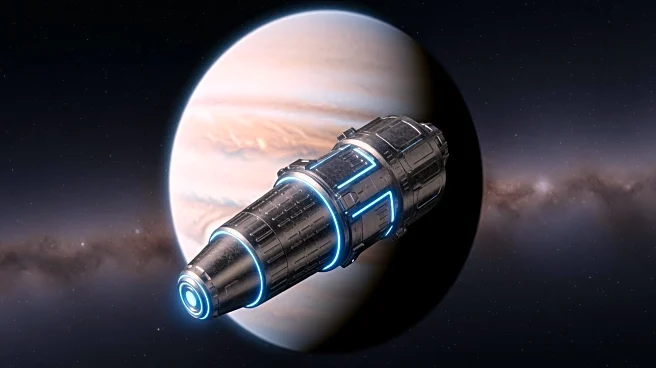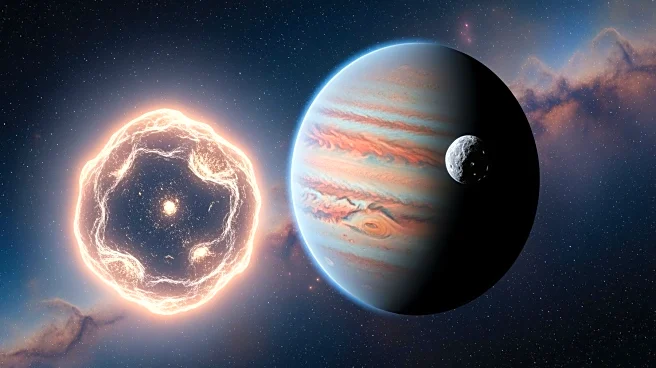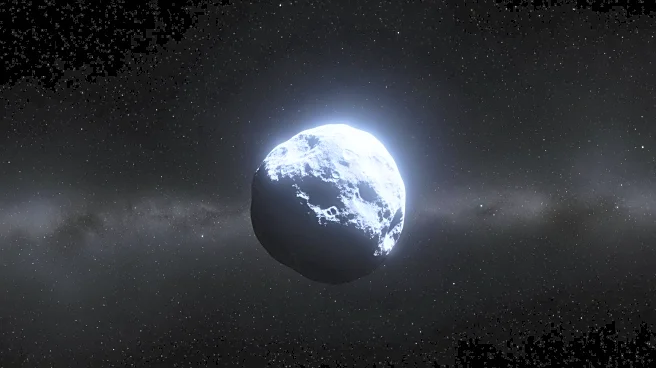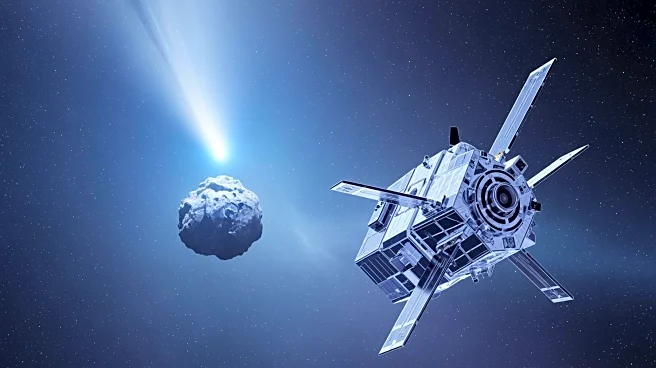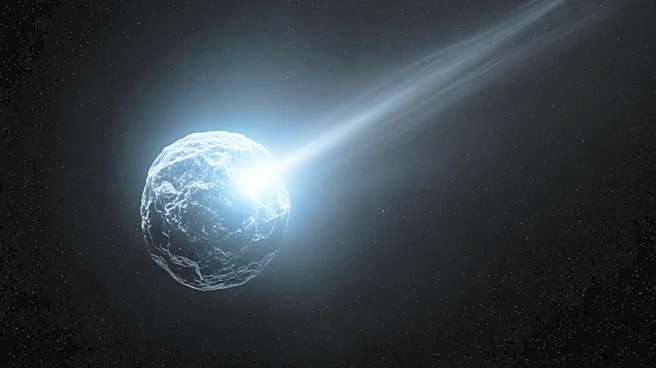What's Happening?
Harvard scientist Avi Loeb has proposed that the interstellar object 3I/ATLAS might be deploying 'satellites' to Jupiter, potentially for an extraterrestrial civilization. Loeb's theory is based on the object's
trajectory, which will bring it close to Jupiter on March 16, 2026, at a distance conducive to releasing probes. The object's path aligns with Jupiter's Hill radius, where gravity allows stable positioning with minimal fuel. Loeb speculates that 3I/ATLAS may have executed a maneuver to ensure proximity to Jupiter, suggesting advanced technology. The comet's behavior raises questions about its purpose and the possibility of alien technology.
Why It's Important?
If 3I/ATLAS is indeed deploying probes, it could have significant implications for our understanding of extraterrestrial life and technology. Discovering non-human-made satellites orbiting Jupiter would suggest interest from an alien civilization, challenging our perception of Earth's significance in the solar system. This event could shift scientific priorities and prompt further investigation into interstellar objects. Loeb's hypothesis, while speculative, highlights the need for continued observation and research into cosmic phenomena. The potential discovery of alien technology would be a groundbreaking development in space exploration and astrobiology.
What's Next?
Loeb hopes that spacecraft like Juno or other orbiters around Jupiter will identify any objects left by 3I/ATLAS. Observations and data collection will be crucial in determining the object's intentions and capabilities. NASA and other space agencies may increase monitoring of interstellar objects to assess their trajectories and potential technological features. The scientific community will likely debate and investigate Loeb's claims, seeking evidence to support or refute the possibility of extraterrestrial involvement. Continued exploration and technological advancements will be necessary to uncover the mysteries surrounding 3I/ATLAS.
